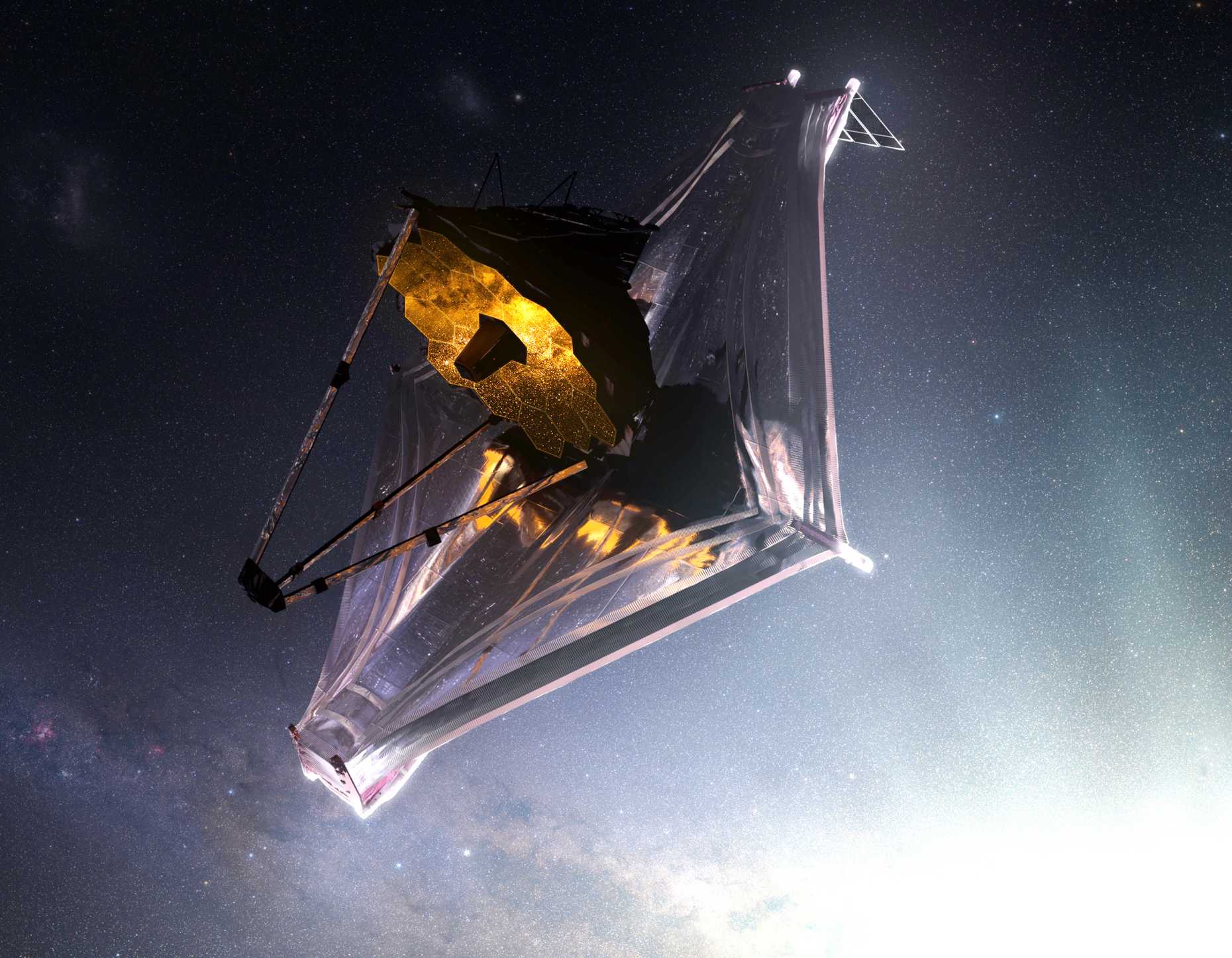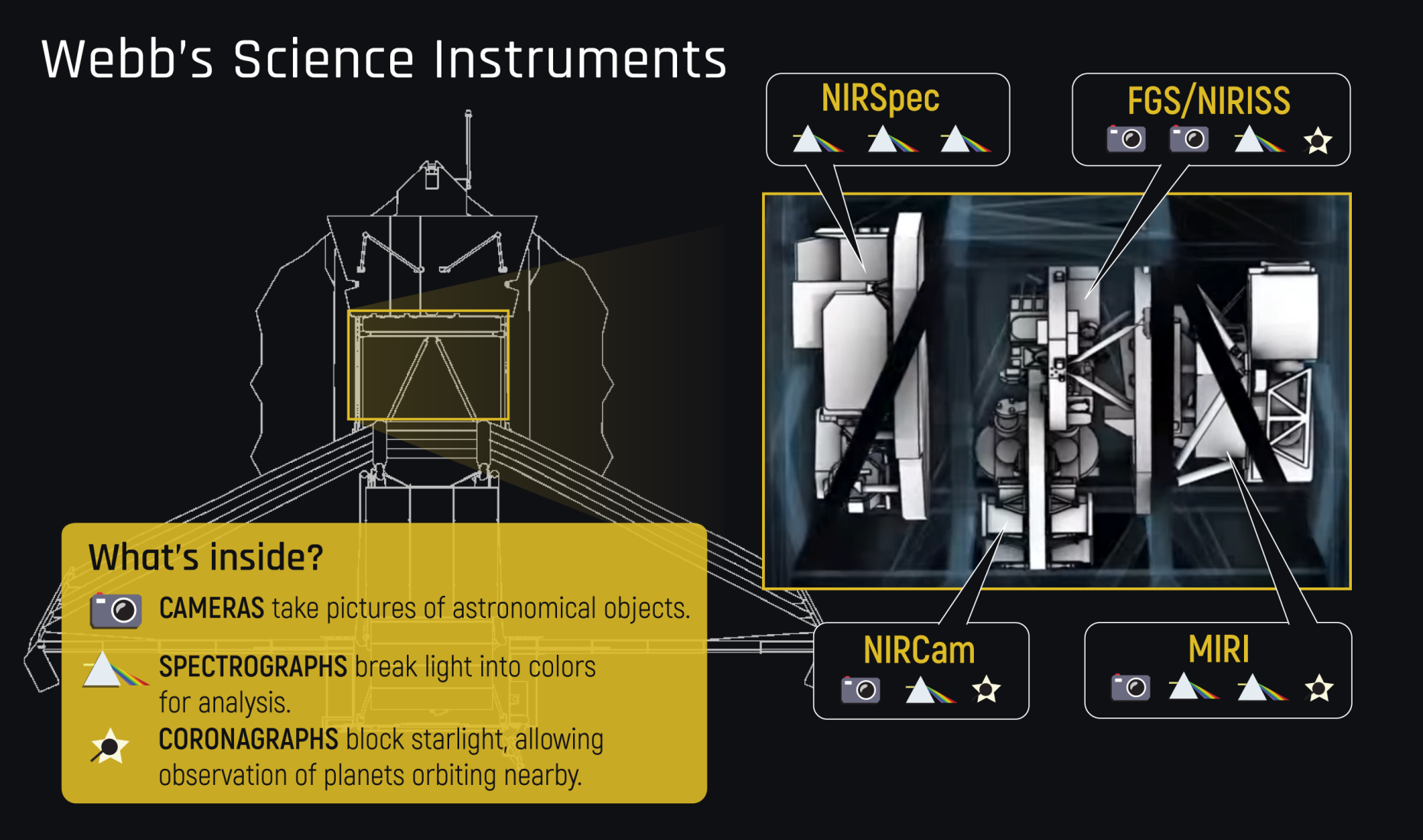The James Webb Space Telescope
The James Webb Space telescope (JWST), also known as "Webb", will be the largest, most powerful telescope ever launched into space.
Webb follows Hubble as the next great space science observatory designed to make breakthrough discoveries in all fields of astronomy. It will push the frontiers of knowledge of our Solar System, reveal the Universe's first galaxies and the birth of stars and planets, and look for exoplanets with the potential for life.
Webb is an international collaboration between the external page US National Aeronautics and Space Administration (NASA), the external page Canadian Space Agency (CSA), and the external page European Space Agency (ESA). In addition to the launch services, ESA further contributes to two (NIRSpec and 50% of MIRI) of Webb's four science instruments, along with personnel to support mission operations.
The mission is set to launch on an Ariane 5 from Europe's Spaceport in French Guiana in December 2021. Webb arrived on the 13th of October 2021 at the Spaceport by boat to the Spaceport and prepares for its launch. Webb is folded up origami-style to fit inside the launcher, which has been customised for the large, infrared telescope. After launch it will embark on a month-long journey to its final orbit about one and a half million kilometres from Earth, at the Lagrange point 2. Along the way it will unfold like a "Transformer" in space, unfurling its sunshield and deploying its 6.5-metre primary mirror that will detect the faint light of distant stars and galaxies.
Science Instruments and MIRI
Webb hosts four science instruments, three working in the near-infrared (NIR) range between 600 nm and 5 µm, and one mid infrared instrument (MIRI) working in the wavelength range form 5 µm to 28 µm.
MIRI is the only instrument on Webb which covers the poorly explored wavelength ranges from 5 μm to 28 μm. Therefore, MIRI will be cooled at 7 K and is the coldest part of Webb. This wavelength range combined with the border breaking sensitivity of Webb will initiate a new age of astrophysical research.

